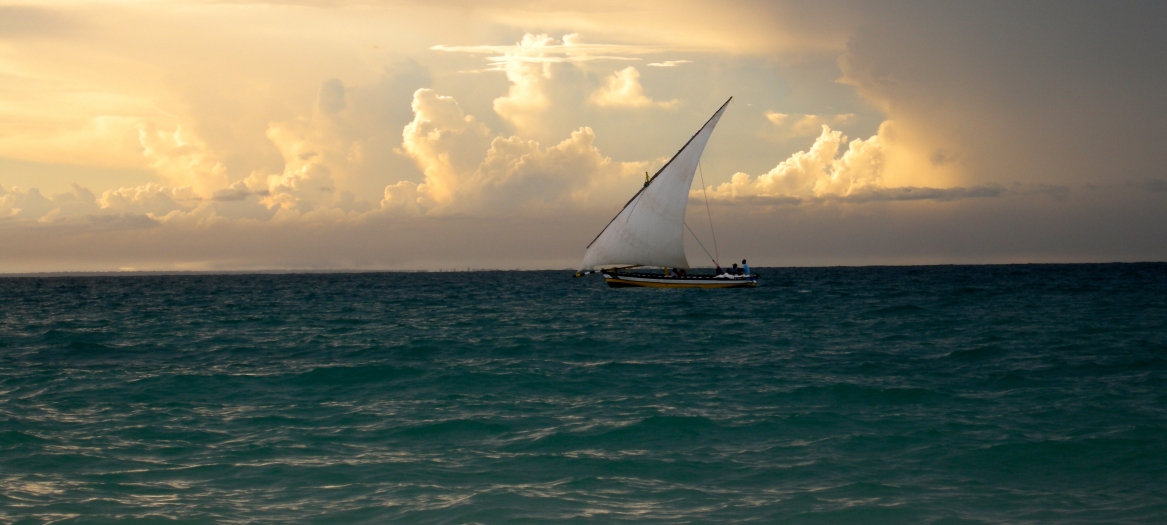History
Vamizi lies in the region of the Mwani people. Their native tongue, Kimwani, from whence the meaning of their name Mwani or “people of the coast” derives, is the main language spoken on the island rather than Portuguese, the official language of Mozambique.
The island, historically known as Amisa, has a majority Muslim population. From the 10th century onwards the people living along the East African coastline converted to Islam to avoid enslavement by Arab traders.
By the early 16th century, the Quirimbas Islands had already been recognized as being an important center of independent Muslim trade. The Quirimbas also had a prolific weaving industry producing Maluane cloth made of indigo dyed silk and cotton, which was highly prized. Ivory, Gold, amber, turtle shell and jet had also always been among the commodities traded on these islands, as well as the trade in slaves.
Towards the end of the 16th century, European, Asian and Arab traders’ activities and the hostilities between them over trading rights, led to the official demarcation of the Province of Cabo Delgado, creating one of Africa’s first modern frontiers.
The entire region, including parts of the mainland, was one of the most productive and important suppliers of food to the south, and in particular to Ilha de Mozambique, the center of power in Mozambique.
Allegiances of the island governors had always been to the North, to Kilwa and Zanzibar for example, but by 1593 a division of captaincy firmly linked Cabo Delgado to Mozambique and Sofala.
In the eighteenth century the majority of the islands were in Portuguese hands; the islands formed an isolated community and, in practice, each island was like a little republic, dependent on its household slaves and trade with the mainland.
During the civil war of 1977-1992, a number of people from the mainland fled to the island, increasing the island’s small population. Today, there are around 2,000 permanent inhabitants of whom about 30% are children. The majority are Islamic (95%), and a small number are Catholic (4%) or followers of other beliefs (1%).
Most of Vamizi’s historic remnants are relics from the Portuguese era, estimated to be from the late 16th and early 17th century, including a Catholic church with Romanesque features, a fort, and a well. The lighthouse at the Eastern tip of the island was built at the start of the 20th century and shows an early example of the use in construction of reinforced concrete.
2002 & LOOKING FORWARD
Over the course of a few years, a group of families of both European and Mozambican origin came together and formed the Friends of Vamizi. These visionaries aspire to continue to gather like-minded supporters and advocates.
The original Maluane Concession was established in 2002 and it comprises three islands, of which Vamizi is the largest. The aim was to combine wildlife conservation and community development with tourism to protect this unspoilt area in the Indian Ocean.
The development of Vamizi Island was an extraordinary undertaking. There was no fresh water available on the island; there was no reasonable access beyond small local wooden boats; and there were no roads beyond tracks roughly hewn through the bush.
However, despite adverse conditions and logistical challenges, Vamizi Island opened its Research Center and in 2005 its Lodge, which was inaugurated by no less than the luminaries Nelson Mandela and Graça Machel.
After ten years of passionate efforts, Vamizi Island is home to the Vamizi Marine Conservation Research Center, has a team of dedicated community workers under the guidance of its own charitable Trust, a private runway, a network of roads, solar power and water generation facilities and a Private Villa Collection, now operated by award winning andBeyond.
It has taken extraordinary commitment and persistence, but as one of the donors to this project says:
“VAMIZI ISLAND IS WHERE WE STILL HAVE A CHANCE TO MAKE A DIFFERENCE. ONCE YOU’VE SEEN VAMIZI YOU BECOME OBSESSED WITH SAVING IT.”
It is our hope and mission that Vamizi Island and its environs will, with the conservation efforts of the Friends of Vamizi and strengthened by our partnership with andBeyond, remain as unspoilt and beautiful for many generations to come.

